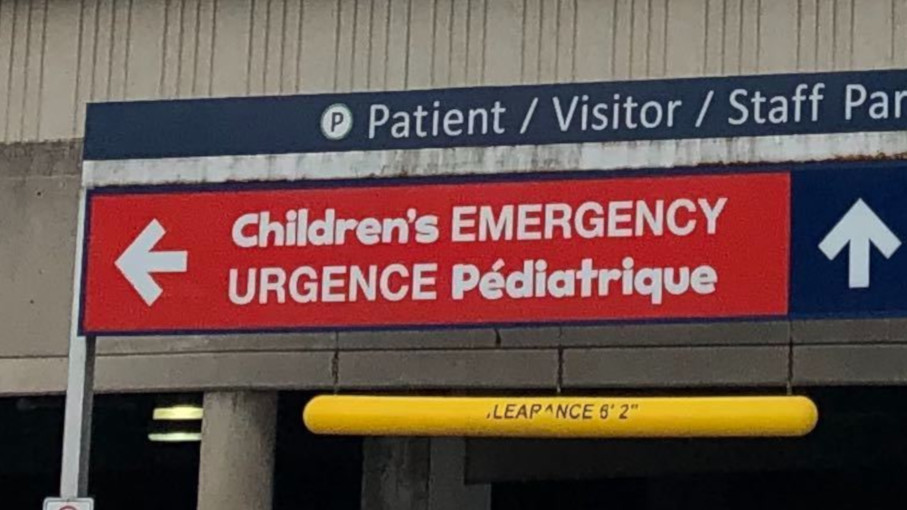As Hamilton emergency departments (EDs) deal with up to four self-harm cases among youth per week, the city’s manager of mental well-being says public health will make the issue “a priority area of focus” in the coming year.

Melissa Biksa attributes the surge in cases to “unique challenges” that came with the COVID-19 pandemic causing “service delivery interruptions” limiting human interactions.
“A lack of typical programs … that run in the community may have been interrupted… (like) social spaces,” Biksa told 900 CHML’s Hamilton Today.
“We had significant interruption in schools, so I think all of those types of experiences over the past two years … are being attributed to further increases.”
Youth self-harm is connected with two of four priority health areas — youth growth and development and mental health and substance use — public health told councillors last week would be given increased focus in 2023.
Hamilton public health classifies ‘self-harm’ as an event attempting to harm oneself through negative behaviour but not necessarily with the intention to produce a life-ending outcome.
The agency used data from a 2020 population health assessment to outline the problem, suggesting recent increases affected predominantly youth aged four to 18 who regularly attend school.
There were 197 visits to an ED among students for self-harm, an annual rate of 2.1 visits per 1,000 students, equating to nearly four self-harm cases per week in the city.
The number was almost double what public health recorded more than a decade ago in 2009, when the annual rate was around one visit per 1,000.
An example of the surge was reported by McMaster Children’s Hospital (MCH) in early 2021, revealing 26 youth admissions for medical intervention and stabilization following suicide attempts from October 2020 through January 2021.
That eclipsed totals recorded during the same months between 2019 and 2020, which sat at just seven cases.

Get weekly health news
Females were most affected in 2020, with 3.8 episodes per 1,000 population, more than double the 1.5 cases per 1,000 reported in 2009.
Students residing in the city centre and east of the Red Hill (wards 2 and 5) have the highest potential for self-harm at rates of 9.6 per 1,000 and four per 1,000, respectively, as of 2020.
Biksa says in her experience, “continued social development” for youth in this age group is important as they develop most of the “problem-solving skills” they will need in their adult years.
“It’s such an intensive time of growth and development and really … relies on continued social development,” Biksa said.
“It’s an important time of social development and development of skills, of resiliency and empowerment that are so critical to develop in the early years.”
Hamilton public health’s potential solutions will begin with intervention and prevention programs focusing on early-life parenting initiatives and partnerships in schools.
It includes Ministry of Health-funded child and adolescent services providing counselling services for children and youth up to 17 years of age.
“I think that’s the work we’ll continue to do in this post-pandemic health system recovery,” Biksa said.
“That’s an important component of emergency response, is continuing to evaluate the outcomes and learn from this experience.”
Public health exploring state of emergency amid opioid crisis in Hamilton
Hamilton’s medical officer of health is exploring the possibility of declaring a state of emergency amid an opioid crisis that has seen paramedic calls almost double over the last two years.
Ward 9 Coun. Brad Clark pitched a motion in mid-January to investigate the thresholds of opioid deaths and overdoses, with the prospect of launching an “effective response” opening up city “funding resources.”
The motion carried unanimously and could potentially be ratified by Hamilton city council by Wednesday.
Paramedics responded to 814 incidents related to suspected opioid overdoses in 2022, according to city data, compared with 430 such incidents in 2017.
Opioid deaths have increased in Ontario by more than 100 per cent since 2017 and took a marked jump when the pandemic hit in March 2020.
The opioid-related death rate is 45 per cent greater in Hamilton compared with Ontario.
“Opioid-related deaths have increased exponentially from 26 in 2005 to 166 estimated in 2021,” said Julie Prieto, director of epidemiology and well-being. “An estimated 30 per cent increase in opioid-related deaths was seen in 2021 compared to 2020.”
The COVID-19 pandemic was particularly devastating for those with issues around mental health and substance abuse.
“The consequence of public health measures put in place to mitigate the spread and severity of the virus — for example, lockdowns, workplace closures and service disruptions — have further negatively impacted many Canadians’ mental health, particularly those who use drugs,” said Prieto.
If you or someone you know is in crisis and needs help, resources are available. In case of an emergency, please call 911 for immediate help.
Crisis Services Canada’s toll-free helpline provides 24-7 support at 1-833-456-4566.
Kids Help Phone operates a toll-free helpline at 1-800-668-6868 with 24-7 support for young people as well as the Crisis Text Line, which can be reached by texting HOME to 686868.
The toll-free Hope for Wellness helpline provides 24-7 support for Indigenous Peoples at 1-855-242-3310. Online chat services are also available.
Trans Lifeline operates a toll-free peer support hotline for trans and questioning people at 1-877-330-6366.
For a directory of support services in your area, visit the Canadian Association for Suicide Prevention at suicideprevention.ca.
– with files from The Canadian Press














Comments